A lot of people think the more content, the better approach.
That isn't necessarily true, though. Have you ever read Anna Karenina? It has a 349,736-word count. Does that make it better than shorter books? No, it doesn't. And when we're talking about website content, it's even worse. You're not even penning a literary masterpiece; you're creating a resource for your customer.
(Don't @ me. I know it's a classic, but Tolstoy could have gotten to the point sooner.)
Honestly, I believe lean websites are in nearly every organization's best interest right out of the gate. With a smaller site, you can focus on building what you need, rather than what you think you need. And when you approach it the right way, you can get a high-converting website that aligns with your sales funnel.
You can generate better performance than you ever did with a massive site.
The Backbone Of Your Sales Funnel Website
When you create a sales funnel website, you're building a site tailored for your ideal customers. You're making material that guides them from point A to point B. And that's what you want. You want to help your customer get their destination as seamlessly as possible.
You build this kind of site using a buyer journey, which looks like this:
Each stage has it's own specific purpose and is critical for engaging and nurturing visitors.
Awareness
.png?width=100&name=1%20(1).png)
The awareness stage is your bait. You brainstorm content for this stage by assessing the questions your customer is asking.
Interest
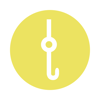 The interest stage is your hook. You brainstorm the types of assets (eBooks, worksheets, webinars) that the customer would find tremendously helpful.
The interest stage is your hook. You brainstorm the types of assets (eBooks, worksheets, webinars) that the customer would find tremendously helpful.
Desire
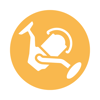
The desire stage is your reel. You pull the customer in with material by volunteering guidance or expertise. Email workflows work well for this.
Consideration
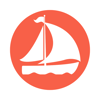
The consideration stage is your boat. You bring the customer onboard with content that demonstrates the value of what you offer.
Decision
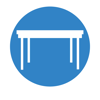
The decision stage is the table. Bring the lead to the table with strong calls-to-action that show you're the best solution.
With those stages as your framework, you build pages and material that support every step. Here is how we leverage every funnel stage to construct this type of website.
Awareness
.png?width=100&name=1%20(1).png) At the awareness stage, your customer is collecting information. You've been a customer at this stage. You start with a Google/Quora/Pinterest/YouTube search for answers to a specific question. You ask friends and co-workers for recommendations. And while you may visit a website and go through their resources, you're not ready to talk to someone yet, especially a salesperson.
At the awareness stage, your customer is collecting information. You've been a customer at this stage. You start with a Google/Quora/Pinterest/YouTube search for answers to a specific question. You ask friends and co-workers for recommendations. And while you may visit a website and go through their resources, you're not ready to talk to someone yet, especially a salesperson.
Through one of those search methods, you find a gate of entry. It may be a blog post or a landing page. These are the pages that support the awareness stage.
For businesses, this is where many customer relationships start. You approach the awareness stage by asking a few questions:
- What types of blog content, infographics, images, social posts or podcasts will attract our target customer to our site for the first time?
- What key questions is my customer asking (and where are they asking them?)
- What is the right inbound content to answer each question?
You can defer to your buyer personas to identify your customer's problems. Let's say I'm a travel startup, and one of my core areas of expertise is traveling to Iceland. I sell a service, which is planning custom trips to Iceland.
Hypothetically, let's say that my customers are men and women between the ages of 30-45 that have full-time jobs and typically take vacations twice a year. They have a larger budget and travel for about a week. They're mostly from the United States.
I want to create content that this audience would find intriguing. The material also needs to be exceptional enough to attract the customer to me for the first time. To do that, I want to learn as much as I can about their behavior and preferences.
I can use a more in-depth template to cover these attributes and characteristics.
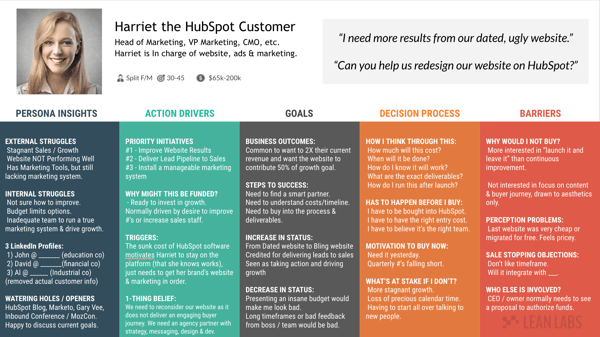
(That's an actual example that I use for Lean Labs.)
Now, I sell custom vacations, but I don't want to lead with that. It's not particularly unique and may not get a lot of attention within the crowded tourism industry. Instead, I will dig in and figure out what types of problems my ideal customer has when planning a trip to Iceland.
Personally, my first step would be searching SEMrush and Buzzsumo.
Between the two, I hit a ton of searches about the broad topic.
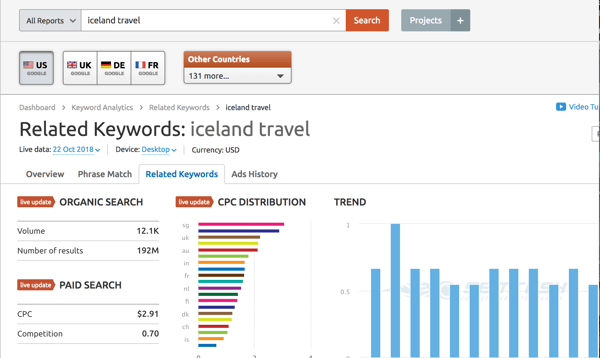
SEMrush Keyword Overview

Buzzsumo Examples
But I want to get more specific. I can use SEMrush's magic keyword tool to start studying volume around cost, time of year, etc. There, I find a cluster of keywords with traffic around "solo travel."

When I search for that topic on Buzzsumo, I come up with some content with decent engagement from this past year. A lot of people are going to Iceland alone.
Why?
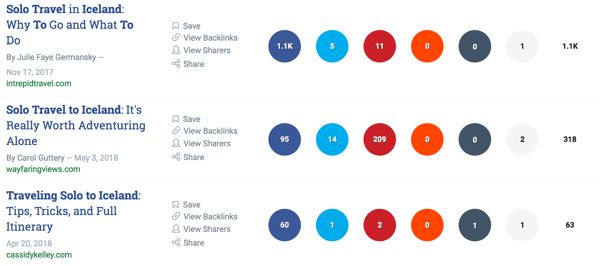
I don't know, but I can investigate the trend. I start to document these insights in a template like our Business Model Canvas. This way, I can dig into the feelings and frustrations my particular customer may have that will lead them to book a solo trip to Iceland.
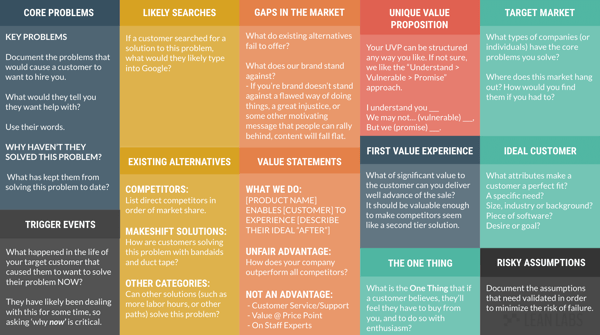
Do they not have travel companions? Are they tired of waiting for their friends to get time off to travel?
Whatever the answer is, I can begin why my persona is considering a solo trip. I can also use Quora, Reddit and Google related searches to inform my thinking.
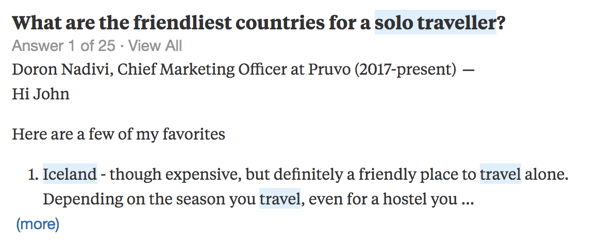
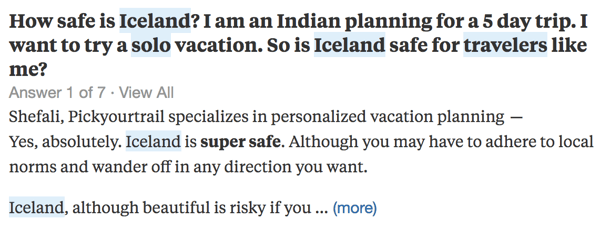
Actual Quora questions that hint at intent and interest
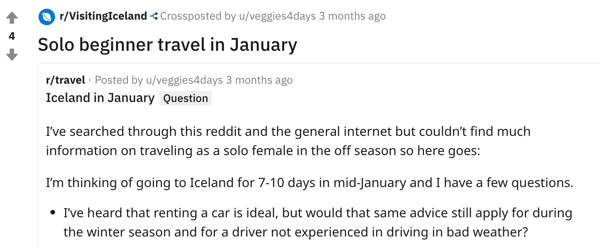

Ongoing Reddit conversations
.png?width=600&name=solotravel%20(1).png)
Related Google search (with data from Keywords Everywhere plug-in)
All of that information provides context and helps me think of potential TOFU offers and website content I can create from this topic. After this research, I may decide to write an eBook about mastering solo travel for the first time.
It's excellent material and doesn't aggressively sell my solution (booking Iceland trips.) Instead, it aims to provide education for someone from my target audience. And in addition to making a great eBook, this exercise contains a lot of insight into my customer's feelings and fears.
Are they scared to travel alone? Can they afford it? Is it safe to go there? What will their friends and family think?
I can use all of this to inform my messaging and craft a consistent narrative about why it is safe and budget-friendly to travel to Iceland.
At this point, I also know I will need to create a landing page to gate this content. Since I'm targeting the content towards TOFU leads, I want to create a form that asks minimal questions to encourage them to download.
Here's an actual example of a TOFU form we use on our site.
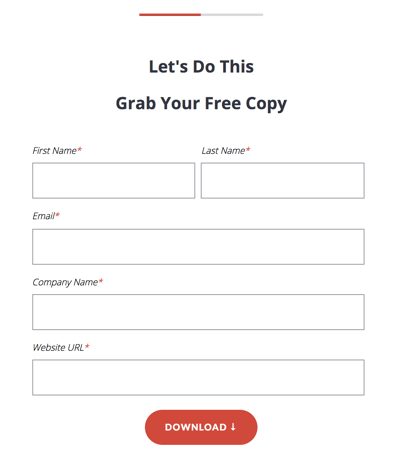
The information we collect here is minimal. You can even ask for less information upfront. The goal is to ask a small amount of data with a contact method, so even First Name, Last Name, and email address would work. You can get additional insights later.
When I build the page, I will also create a CTA. I don't need to do this yet, but I can make a note that this page will require a call-to-action. And in HubSpot, creating a CTA is very easy. You can create a custom button or upload an image.
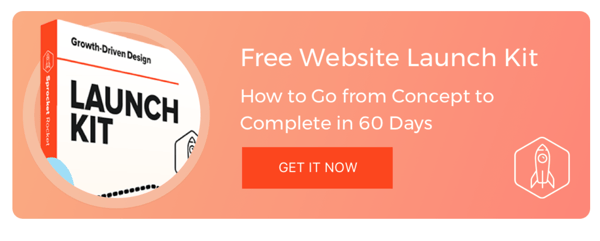
I like this image CTA that we use for our Free Website Launch Kit.
(Our designers make our CTAs, but you can also use Canva and start with a free template.)
After you go through the entire awareness stage, you will have a few ideas about the messaging your customer will respond to and the questions you need to answer before moving forward.
You will also have a short list of pages, forms, calls-to-action you need to create.

You can house this in a tentative website tracker (I use a Google Spreadsheet.) I can continue to add possible website pages as I strategize out my buyer journey and sales pipeline and keep track of what I need to create.
Now, one last note. If you're a big brand name and you're already generating a lot of TOFU leads because they know you and your service, the awareness stage may not require as much of a focus. It depends on your goals.
However, if you're a newer business or you're having difficulty getting your name out there, the awareness stage needs to be a priority. You need to create smoking content and run other initiatives to get your brand name and service into focus.
Interest
 By the time they reach the interest stage, my potential customer is doing additional research on traveling alone for the first time. I baited them with my previous offer, or they found me in a search. Either way, they're excited about the idea.
By the time they reach the interest stage, my potential customer is doing additional research on traveling alone for the first time. I baited them with my previous offer, or they found me in a search. Either way, they're excited about the idea.
My TOFU content and offer was good but broad. It will bring in a lot of fish, but perhaps not the particular fish that I want. Without more specific content, I will continue to attract other types of travelers outside of my primary audience, such as long-term digital nomads and backpackers that travel solo.
That's not bad, but they're not my ideal customer. As a result, I want to craft material and language that can help attract and narrow down the more qualified leads. I can do that by brainstorming tools and materials that will be irresistible to my specific customer.
A few examples of valuable content and website messaging for this stage could include worksheets, a webinar, or a video series. For this example, the material I collect for this stage could include:
- How To Budget A Week-Long Solo Iceland Vacation: Free Worksheet
- How Much Will My Solo Iceland Trip Cost? Budget Calculator
- The Only Solo-Travel Week-Long Itinerary You Will Ever Need
Let's say I settle on the free worksheet. I will do the same thing as I did for the awareness stage, and think about all of the necessary materials to get that offer on my site.
Landing page, thank you page, form and call-to-action.
Check, check, and check. Add those to the tracker.

For this stage, I can create another form with form fields that gather more relevant information about this lead.
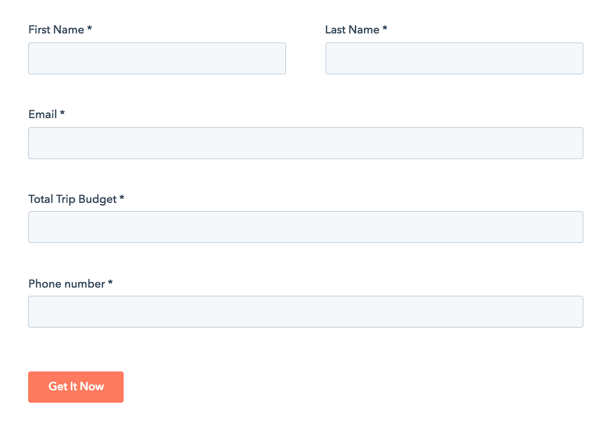 The neat part about using HubSpot is that I can employ progressive profiling here. I can queue up backup forms in case any of these fields are known. For instance, if Jessica downloaded my TOFU offer, the HubSpot CRM already has her information.
The neat part about using HubSpot is that I can employ progressive profiling here. I can queue up backup forms in case any of these fields are known. For instance, if Jessica downloaded my TOFU offer, the HubSpot CRM already has her information.
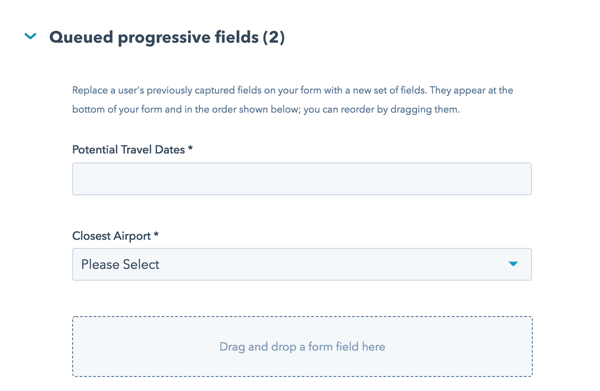
When she goes to fill out this form, the first name, last name, and email address will disappear. My queued forms will appear in their place, and I can get to know her better through the data.
It also keeps your organized filled with useful information about your lead that you can use later.
DESIRE
 The desire stage is where you put all of the data you're collecting to use. At this point, your customer may be considering a few options. He or she wants to travel alone, but they're not sure whether or not to plan a trip themselves or purchase a package. At this point, you want to start sprinkling the benefits of vacation packages without coming out and asking them to buy from you.
The desire stage is where you put all of the data you're collecting to use. At this point, your customer may be considering a few options. He or she wants to travel alone, but they're not sure whether or not to plan a trip themselves or purchase a package. At this point, you want to start sprinkling the benefits of vacation packages without coming out and asking them to buy from you.
You can go back to the Business Model Canvas to uncover some of their trigger events and pain points to make your desire stage material seem more urgent and exciting. You want to get their heart pumping. You can also utilize a template called the Value Proposition Map.
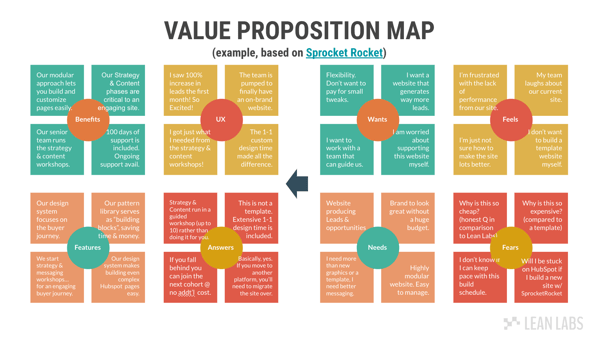 With this template, it's easier to extract insights about how your product or service will help them overcome their objections and provide the solution they're seeking. For our persona, for instance, they could be feeling like they don't want to plan a solo trip by themselves.
With this template, it's easier to extract insights about how your product or service will help them overcome their objections and provide the solution they're seeking. For our persona, for instance, they could be feeling like they don't want to plan a solo trip by themselves.
We'll map that to how our UX (user experience) resolves that feeling, which could be that our support specialists plan the entire trip for them. If the fear is that Iceland isn't safe, the answer could be that we provide additional trip insurance and only book accommodations and excursions we've tested out ourselves.
You get it. At this point, we want to increase excitement and (you guessed it) build up desire for your service. What content will scratch the itch? What material will make them want to learn more about you?
You can do this with a page for case studies or a what we do page that explains your process. You could even create a list of statistics to assuage some of these hesitations like HubSpot does for marketing.
At this point, your website tracker could look like this:
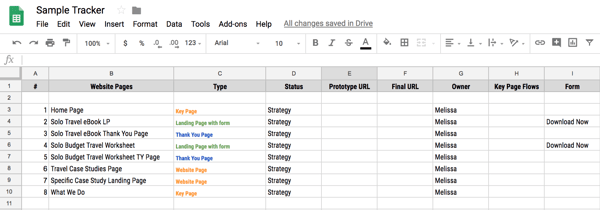
You're getting a lot closer to a sales pipeline website plan.
(Also, remember when I pretty much built a website in a blog post? It's this one.)
Consideration
 At the consideration stage, the customer is yours to lose. It's time to convince your customer that you're the right choice. There are a few ways you could go here for website content, but I believe that video customer testimonials are one of the best options.
At the consideration stage, the customer is yours to lose. It's time to convince your customer that you're the right choice. There are a few ways you could go here for website content, but I believe that video customer testimonials are one of the best options.
First, video helps customers convert like crazy. The latest video marketing statistics speak for themselves:
- According to Forbes, 60% of people prefer watching a video to reading any text.
- Neil Patel says that product videos can increase purchases by 144%.
- HubSpot found that 43% of people want to see more video content from marketers.
Second, people want to visualize what they're buying before they buy it. There's no better way than to provide a video that walks through everything in under two minutes. You want to transition from delivering value and building trust. Now, you want to use that trust to help the customer understand what you have to offer them.
That's why we use video on some of our key pages, such as our Sprocket Rocket Design System page.
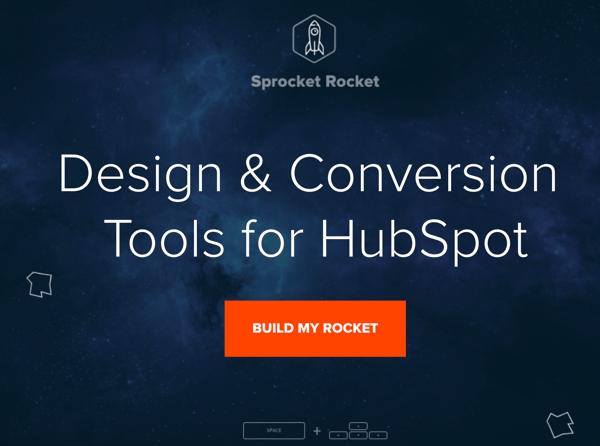
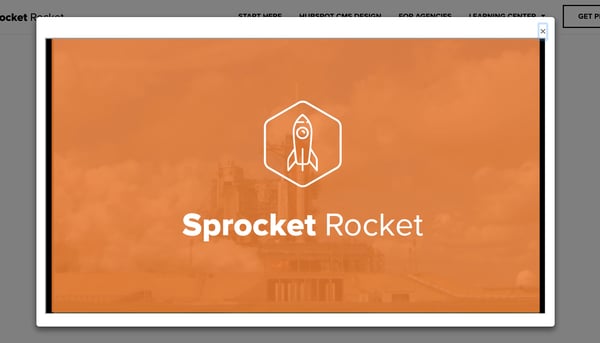
The video explains our entire process. The reason that this is so useful at the consideration stage is to convince the lead of course, but also to convince anyone else that they involve in the buying process.
Your lead can forward the video to their boss. He or she can send it to their mother or their spouse. It helps anyone that hasn't been along for the ride get the value of what you're selling right away.
You can also use video at the consideration stage to post customer testimonials. You could create a website page solely for video customer testimonials, as well as a "why us" page that walks through your product or service in use.
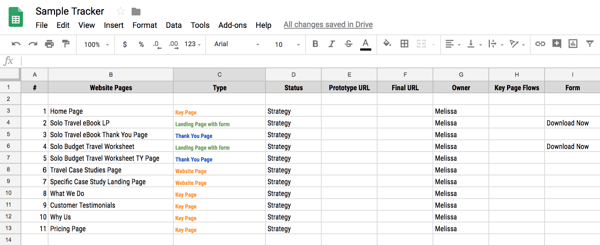
You will also want pages that are mission-critical to conversion, such as a pricing page.
Decision
 If your lead reaches this last stage, you've done it. They want to buy. At this point, all you need to facilitate them becoming a customer. A few questions I always ask when building material for this stage include:
If your lead reaches this last stage, you've done it. They want to buy. At this point, all you need to facilitate them becoming a customer. A few questions I always ask when building material for this stage include:
- What signals indicate that a customer is thinking about buying?
- What can I do to lower obstacles and barriers to purchase?
- What are my decision phase offers & CTA’s?
The answers to these questions will inform the content necessary to get that lead to the next step of their purchase.
For example, a signal could include filling out a learn more form. But what pages would the person have to come from to indicate this strong of an interest?
It could be the pricing page we've already decided to build. They could click a "talk to us" CTA on that page, which would guide them to a landing page. On this page, we'll ask for their phone number, as well as qualifying questions to ensure that they're a match for our service.
Add it to the website tracker.
We could also use HubSpot Smart Lists to automatically compile SQLs based on behavior, such as downloading a MOFU offer, providing a phone number and travel budget, etc.
The ability to segment leads keeps your CTA tidy, but can also help you build out future pages with smart website content, construct workflows, and other useful features.
A lot of companies do well with free consultations, trials, and demos at this stage. Those are some of the best BOFU offers. That means the lead is ready to give your product or service a spin. You will need a landing page and form to support this offer.
While this stage may seem like a cakewalk, a lead can easily walk away if the process is difficult or inconvenient. Make sure it's simple.
Tying It Together
After you go through all of the strategy and planning for your sales pipeline website, you can draft a sitemap. You will use all of the pages you've been adding to your tracker to start one.
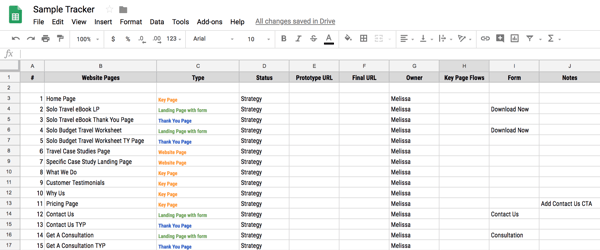
But before you do, there may be a few critical business website pages you will need in addition to your pipeline pages. Depending on your industry and service, these can include legalese pages, additional belief pages, a team page, and more.
I use Slickplan to put together sitemaps, but you can also use a whiteboard, a word document, excel and more. Here's a sitemap I whipped together using a free tool called Write Maps.
I started with selecting the sections for my navigation:

Then, I look at each section and decide which pages will stem from each one. For example, a page for destinations could link to the see pricing page, which will connect to our consultation LP and our solo budget worksheet.
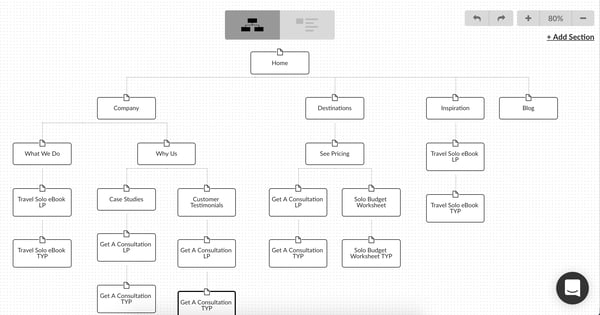
The sitemap may also identify a need for additional pages, such as a company page or an inspiration page that you may have overlooked before.
Overall, there are all types of ways to organize your content in a sitemap. You should do what works for you and helps your team understand how all of the pages can connect.
Starting Your Sales Pipeline Website
When you build a website using your sales funnel stages, it can streamline your customer's entire experience. But it will also accelerate your own experience. With this type of site, you can coordinate all of your marketing and sales initiatives to connect the entire buyer journey.
With a tool like HubSpot, you can get even more from your website. The features I mentioned in this post are just a few capabilities of the platform. However, this approach works with any CMS you choose to utilize. You can access all of the templates from this post (and more) for free in our SprocketRocket Strategy Kit.